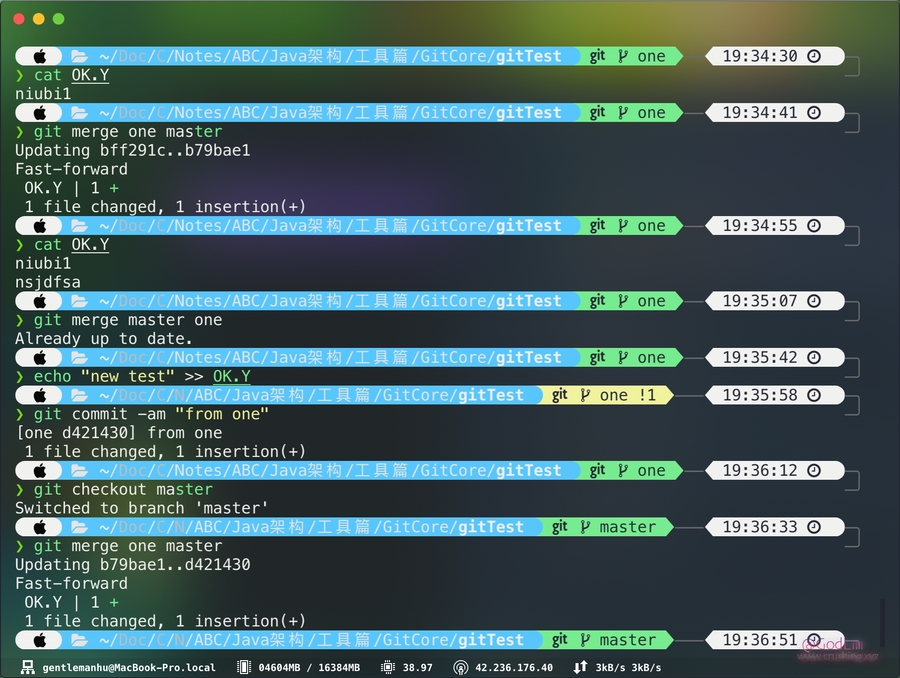Git basic
Author: Gentleman.Hu
Create Time: 2020-09-19 20:20:08
Modified by: Gentleman.Hu
Modified time: 2020-09-25 19:15:41
Email: [email protected]
Home: https://crushing.xyz
Description:Git some notes
1. git存储方式
按照元数据内部存储类似k/v存储
git hash-object -w "filename" #查看hash
基本使用
git add -A ;#添加所有 git commit -am "meg";#提交到本地仓库 git rm --cached target -r(recursion);#删除暂存区的文件(add后的文件) git push;#提交到远程仓库 git branch -d {dev};#删除分支 git checkoout <branch name>;#切换分支 git merge <merge target>;#合并分支。若有冲突,则需要手动修改再commit git log ;
几种创建分支
基于当前分支新建分支
git branch
基于提交新建分支
git branch
基于tag新建分支
git branch
其他待实际操作发现
一些问题
git commit -a和git add .区别git commit -ameans almost[*] the same thing asgit add -u && git commit.It's not the same as
git add .as this would add untracked files that aren't being ignored,git add -uonly stages changes (including deletions) to already tracked files.[] There's a subtle difference if you're not at the root directory of your repository.
git add -ustages updates to files in the current directory and below, it's equivalent togit add -u .whereasgit commit -astages and commits changes to all* tracked files.source:区别
git add -Aandgit add .andgit add -u区别According to git version 1.x
“git add -A” is equivalent to “git add .” and “git add -u“
git add -A stages All
git add . stages new and modified, without deleted
git add -u stages modified and deleted, without new
The important point about git add . is that it looks at the working tree and adds all those paths to the staged changes if they are either changed or are new and not ignored, it does not stage any ‘rm’ actions.
git add -u looks at all the already tracked files and stages the changes to those files if they are different or if they have been removed. It does not add any new files, it only stages changes to already tracked files.
git add -A is a handy shortcut for doing both.
git add -A is equivalent to git add –all
git add -u is equivalent to git add –update
According to git version 2.x
git add -A stages All
git add . stages All in same path
git add -u stages modified and deleted, without new
There is no more difference in 2.0. git add . equals to git add -A for the same path, the only difference is if there are new files in other paths of the tree.
With Git 2.0, git add -A is default: git add . equals git add -A .
Source:[differences](https://www.dineshonjava.com/difference-between-git-add-a-and-git-add-dot-and-git-u/#:~:text=git%20add%20%2Du%20looks%20at,handy%20shortcut%20for%20doing%20both.)
git 如何处理Symlink file,如何处理链接的文件?
只是记录追踪了合格链接文件,并未追踪这个链接引用的文件
So, that's what Git does to a symbolic link: when you git checkout the symbolic link, you either get a text file with a reference to a full filesystem path, or a symlink, depending on configuration. The data referenced by the symlink is not stored in the repository.
建议写成相对路径添加e.g.
ln -s ../xxx.md xxx.mdThe reason for this is that given that a symlink contains the path to the referenced file, if the path is relative to a specific machine the link won't work on others. If it's relative to the repository itself on the other hand, the OS will always be able to find the source.
:Way to my success!
Last updated